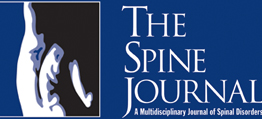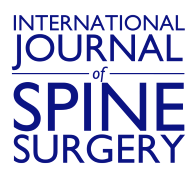
Abstract
BACKGROUND CONTEXT: Short- and mid-term studies have demonstrated that cervical disc arthroplasty (CDA) can maintain or restore range of motion and sagittal alignment in select patients with cervical disc degeneration. Upon completion of the 7-year Mobi-C FDA study, follow-up continued out to 10 years on a subset of CDA patients from high-enrolling centers in the FDA study. This is an analysis of the radiographic outcomes of the first 98 CDA patients with 10-years follow-up.
PURPOSE: The purpose of this study is to present preliminary radiographic outcomes of the first 98 (approximately 50%) patients followed for 10-years in a multicenter study of cervical arthroplasty for one- and two-level pathology.
STUDY DESIGN/SETTING: This was a prospective cohort study of patients treated with cervical disc replacement at one or two contiguous levels using the Mobi-C Cervical Disc. Following completion of the 7-year FDA post approval study, follow-up was extended to 10 years for consenting patients at seven high-enrolling centers.
PATIENT SAMPLE The inclusion criteria for this study was adult patients (>18 years) with radiculopathy or myelopathy and cervical spondylosis at one or two contiguous levels and no prior cervical operations.
OUTCOME MEASURES: All radiographic evaluations were conducted by independent radiologists (Medical Metrics, Inc., Houston, TX, USA). Radiographic endpoints included segmental and global range of motion, sagittal alignment, adjacent level degeneration (ALD) and heterotopic ossification (HO). The Kellgren-Lawrence scale of disc degeneration was used to define radiographic ALD. HO was classified using the system adapted from McAfee and Mehren. HO grades 3 and 4 were classified as clinically relevant due to restricted ROM.
METHODS: Ten-year radiographic follow-up was obtained from 98 CDA patients (53 2-level; 45 1-level) at seven centers. All radiological endpoints for the study cohort including HO were evaluated at 10 years and were compared to the 7-year data for the group using statistical tests that were 2-sided, with p values<.05 considered significant.
RESULTS: There were no significant differences in demographic factors or preoperative patient-reported outcomes between these patients and the original FDA cohort. Both segmental flexion-extension (FE) and lateral bending (LB) range of motion remained significantly greater (p<.001) than preop ROM, and mean segmental ROM was maintained from 7 to 10 years (p>.05). Global (C2-C6) flexion-extension and sagittal alignment also were maintained from 7 to 10 years (p>.05). Clinically relevant ALD (Grades III-IV) at 10 years was not significantly different from the 7-year incidence for one-level (25.0% vs. 26.2%; p=.47) or 2-level (17.0% vs. 13.7%; p=.16) CDA patients. The incidence of clinically relevant HO at 10 years was not significantly different from the 5-year incidence for one-level (28.9% vs. 33.3%; p=.88) or 2-level (35.8% vs. 26.9%; p=.21) CDA patients. From 7 to 10 years, 94% of patients had no progression of HO. Although patients with Grade 3/4 HO had diminished ROM, range of motion at the affected level(s) remained stable in these patients from 7 years (FE 3.7°; LB 2.7°) to 10 years (FE 3.5°; LB 2.6°).
CONCLUSIONS: We demonstrate continued maintenance of radiographic performance of cervical arthroplasty out to 10 years. At 10-year follow-up, both one- and two-level arthroplasty demonstrate sustained range of motion and sagittal alignment in comparison to baseline values. Progression of ALD and HO was limited from 7 to 10 years in these patients. Our preliminary results through 10 years demonstrate that total disc arthroplasty with Mobi-C continues to be an effective surgical treatment for patients with one- or two-level cervical degenerative disc disease.
To Read The Full Article Click Here





